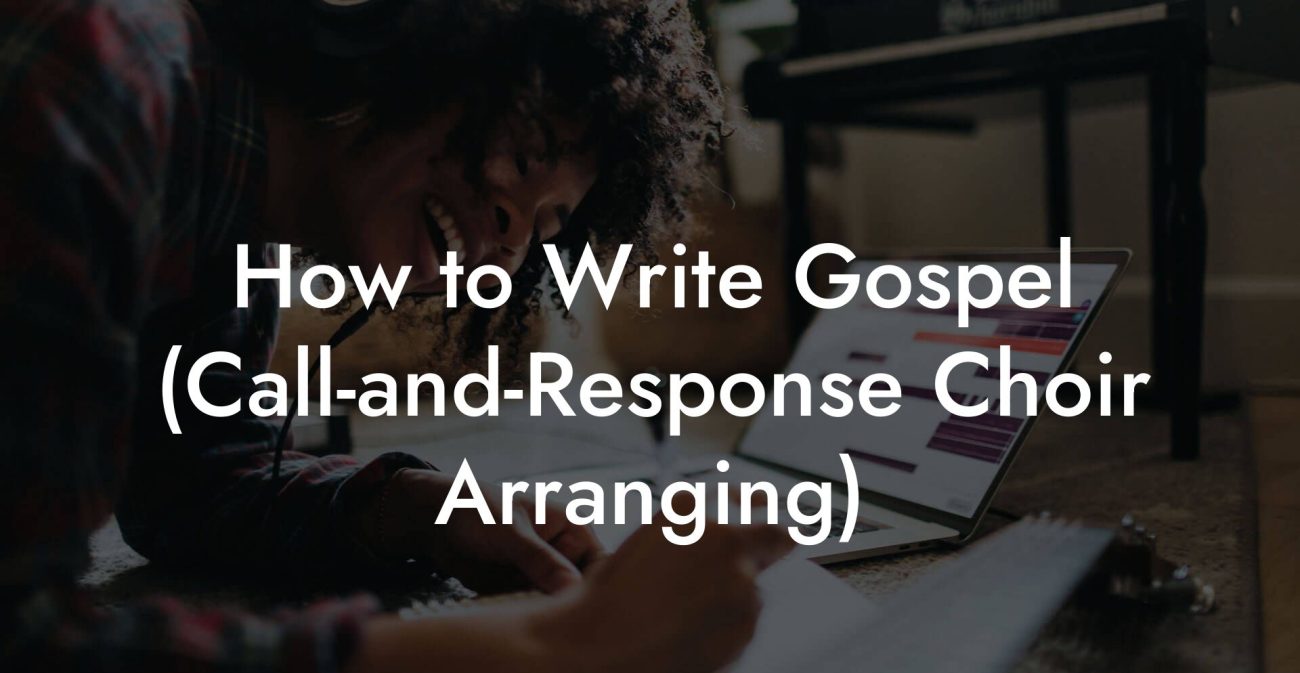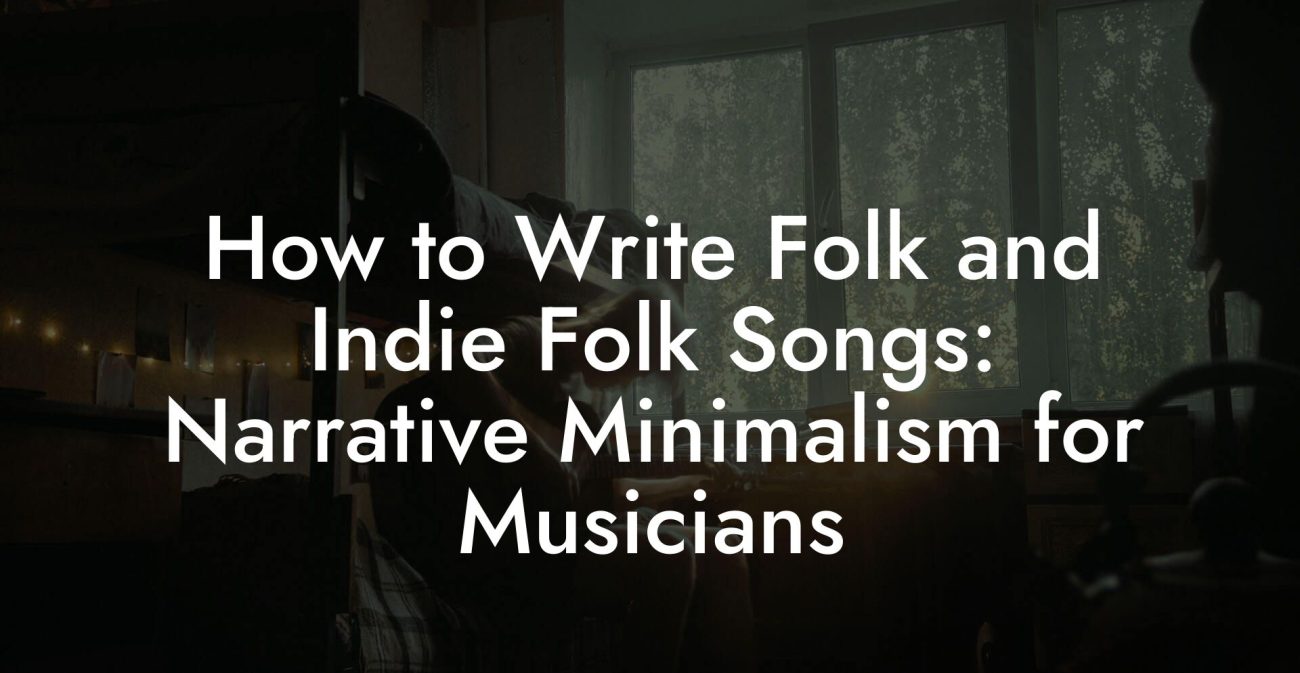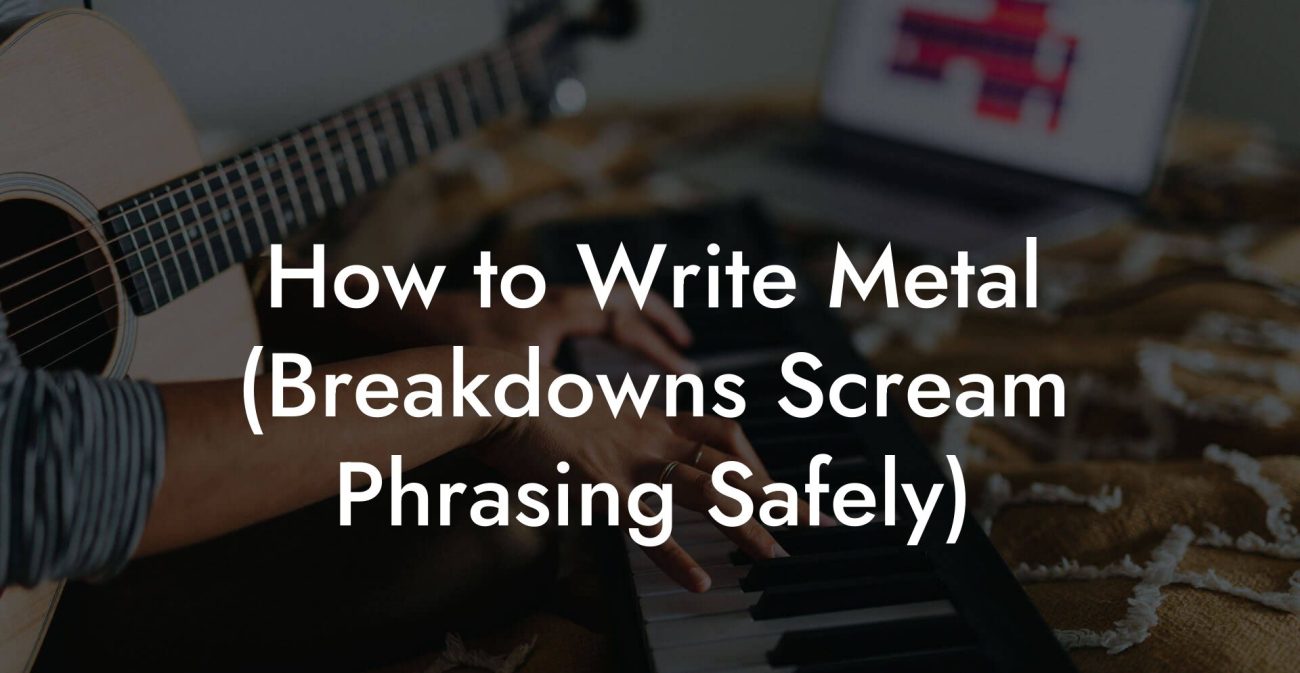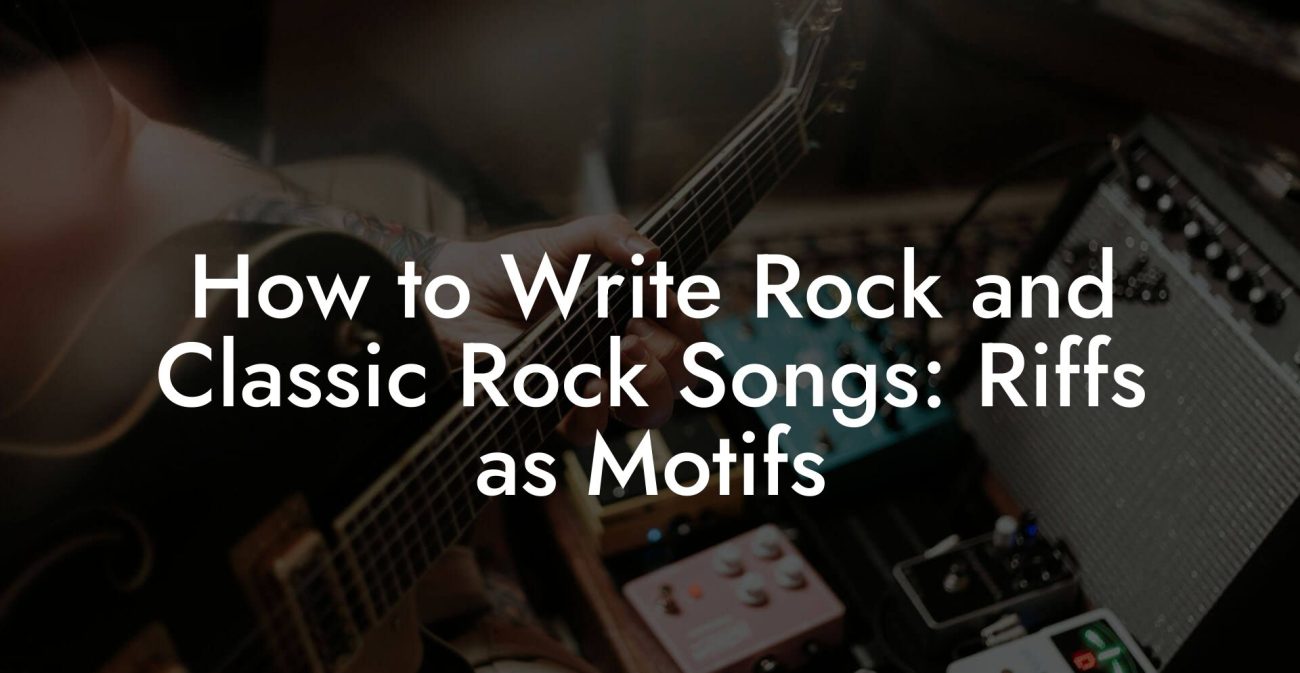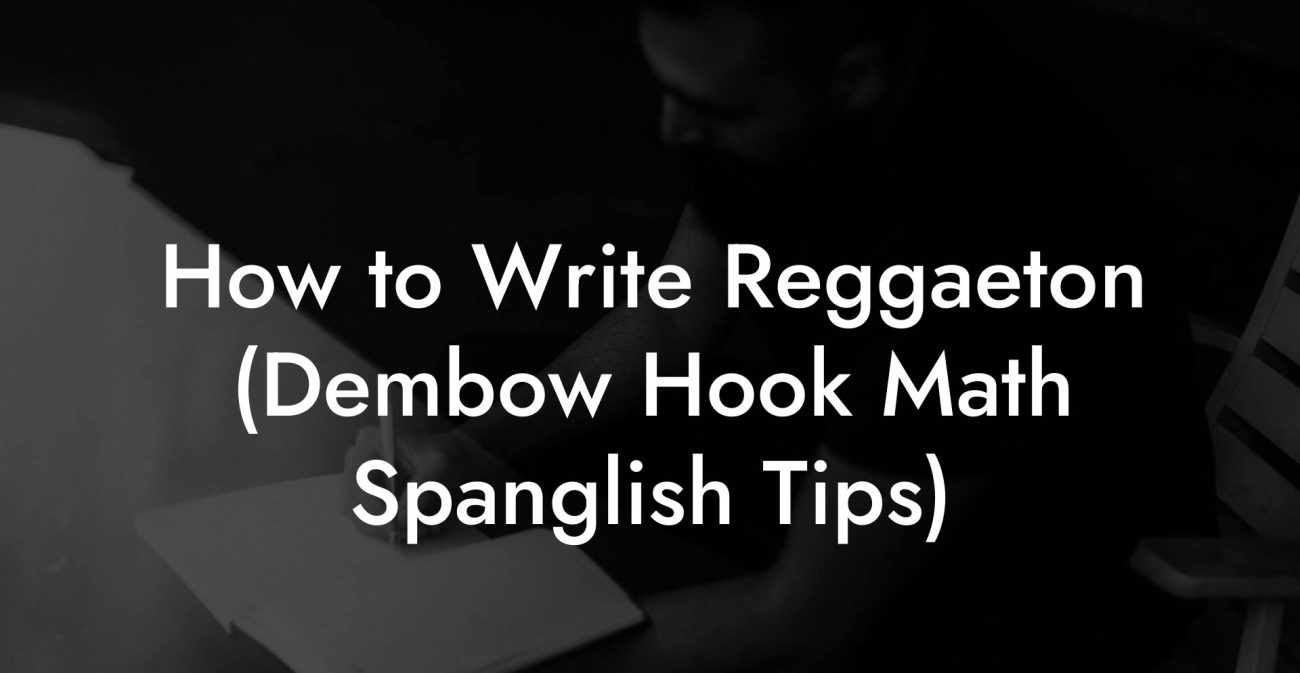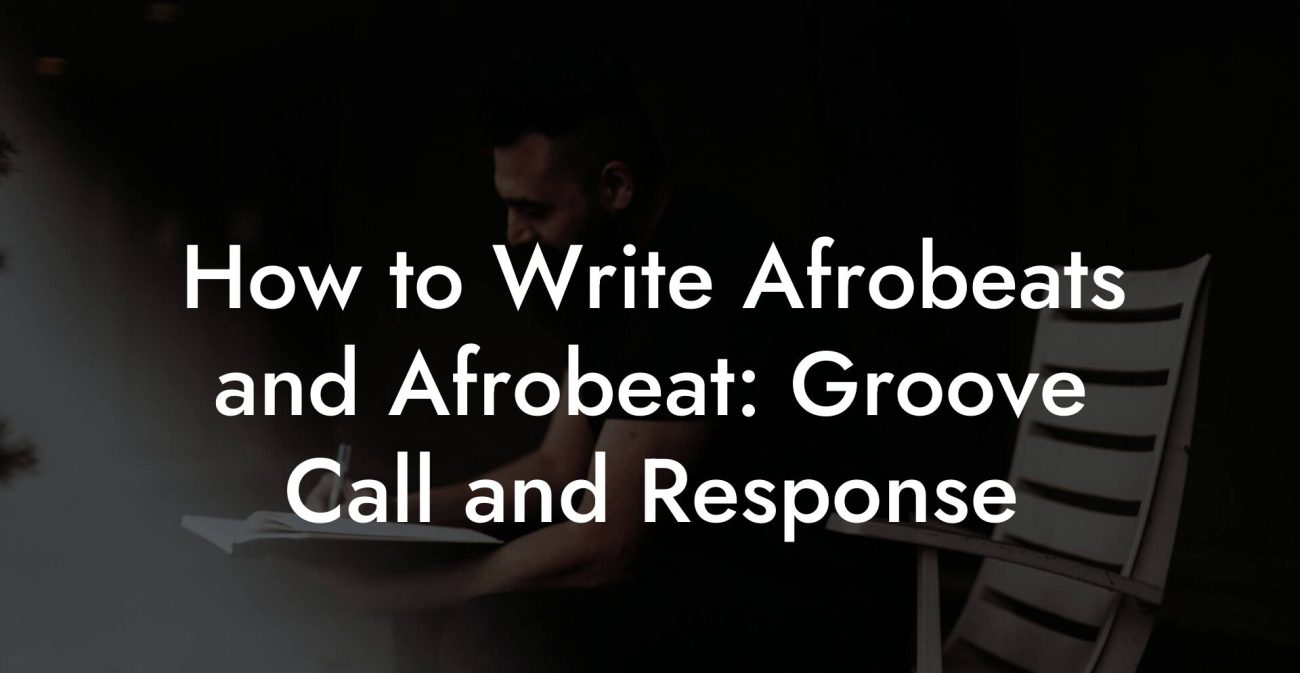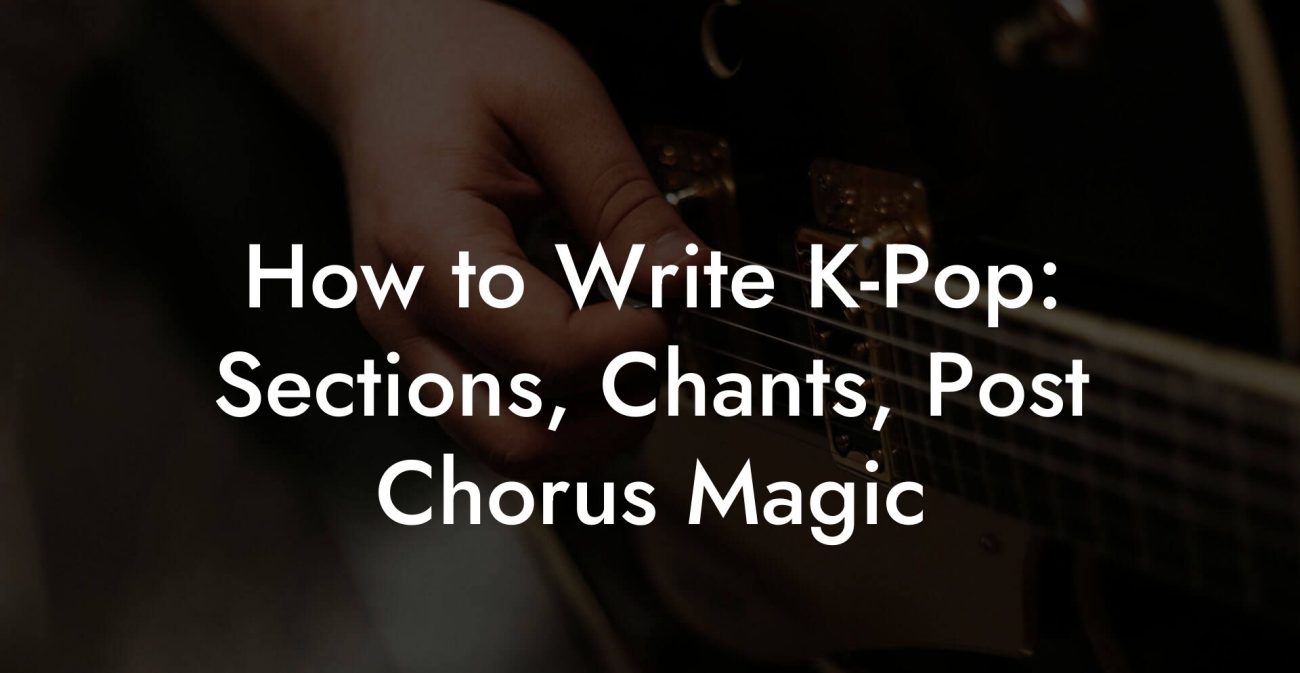Songwriting Advice
How to Write R&B & Neo Soul (Tone Pocket Ad Libs)
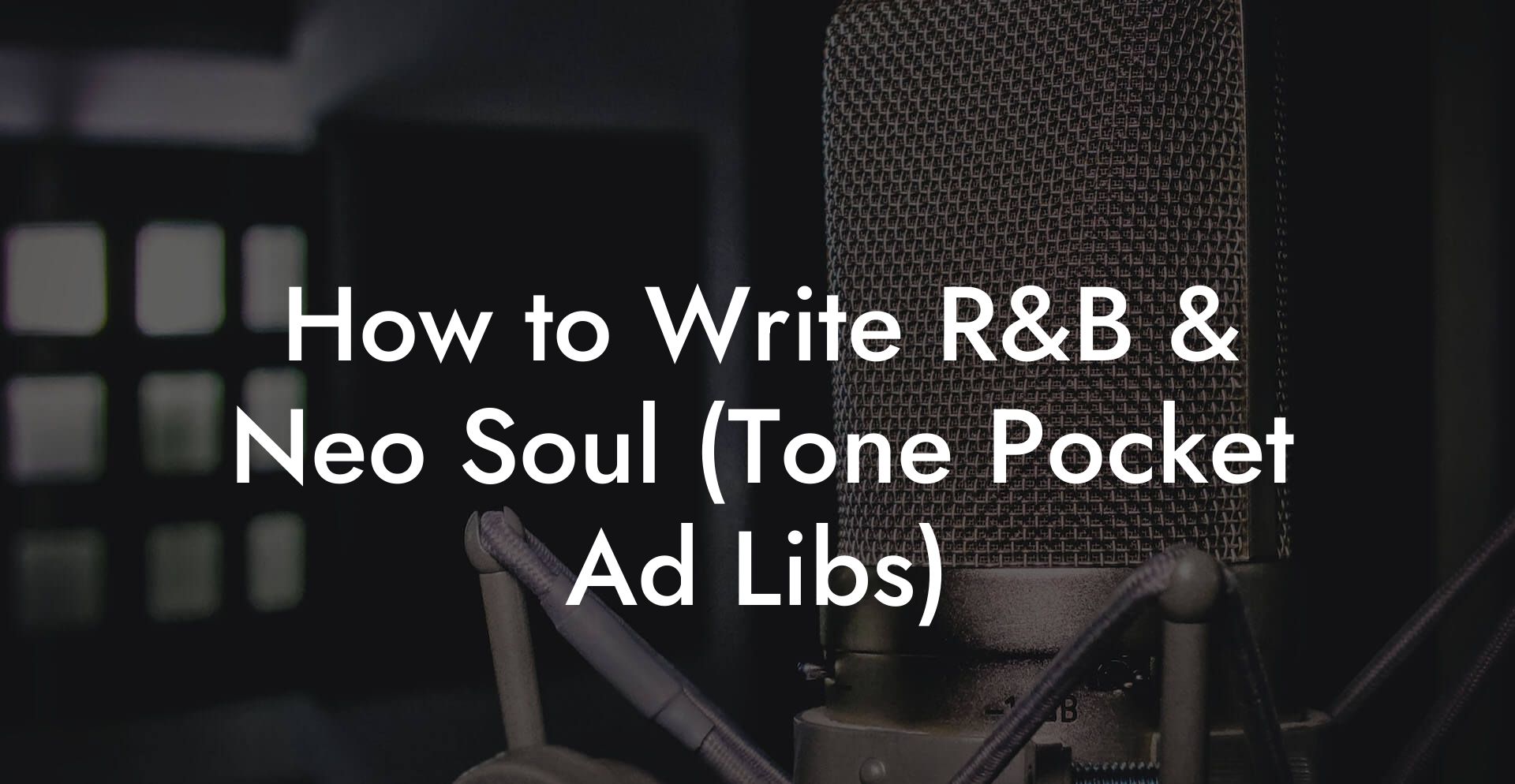
You want ad libs that feel like velvet and land like a punchline. You want little vocal moments that make listeners rewind and text their friends. You want to sound effortless and intentional at the same time. This guide gives you a full roadmap for writing R&B and Neo Soul ad libs that live in the tone pocket, with real life scenarios, practical drills, and studio tips that do not require selling a kidney to pay for the perfect plugin.
Quick Interruption: Ever wondered how huge artists end up fighting for their own songs? The answer is in the fine print. Learn the lines that protect you. Own your masters. Keep royalties. Keep playing shows without moving back in with Mom. Find out more →
Quick Links to Useful Sections
- What Is a Tone Pocket
- Quick definitions you need
- Why Tone Pocket Ad Libs Matter in R&B and Neo Soul
- Types of Ad Libs and How They Function
- How each function affects the song
- Finding Your Tone
- Exercises to locate tone
- Vowel Shapes and Why They Matter More Than You Think
- Practical vowel swaps
- Phrasing and Micro Timing
- Simple timing rules
- Melodic Choices for Neo Soul Color
- Melodic devices to try
- Harmony and Chord Choices That Invite Ad Libs
- Chord suggestions
- Lyric Strategies for Ad Libs
- Ad lib word bank
- Prosody and Natural Speech
- Quick prosody test
- Dialect and Authenticity
- Arrangement Placement Strategies
- Recording Techniques for Tasteful Ad Libs
- Practical mic and recording tips
- Editing and Comping Ad Libs
- Mixing Tricks That Make Ad Libs Glow
- Parallel processing tip
- Real Examples With Notes
- Scenario 1: Break up text at 2 a.m.
- Scenario 2: Flirting in a late night drive
- Scenario 3: Confession and regret
- Writing Drills for Tone Pocket Ad Libs
- How Many Ad Libs Is Too Many
- Collaborating With Producers and Engineers
- Studio etiquette that helps
- Polish Pass Before Release
- Action Plan You Can Use Today
- Common Mistakes and How to Fix Them
- When an Ad Lib Becomes the Song
- Questions Songwriters Ask
- Can I write ad libs before I write the main melody
- Should ad libs be the same every performance
- How do I practice ad libs without a band
- R&B and Neo Soul FAQ
Everything here is written for artists who want to level up fast. We will cover what a tone pocket is and why it matters. We will explain ad libs and fills and how they sit in the arrangement. We will walk through vocal tone, timbre, vowel shapes, micro phrasing, rhythmic placement, melodic choices, harmony colors, lyrical approaches, and studio and mixing tricks that make ad libs feel like personality instead of noise. We will also include drills you can do in a bathroom stall, on the bus, or while pretending to be productive in the studio.
What Is a Tone Pocket
Tone pocket is a piece of studio slang that means the exact sonic space a vocal sits in so it feels natural with the beat and the other instruments. Imagine a tiny living room where the vocalist sits, the drums are at the door, and the keys play quietly in the corner. If the vocal is in the right spot, the listener leans forward. If the vocal is in the wrong spot, the listener leans away and checks TikTok.
Another way to say it is sonic fit. Tone is timbre and texture. Pocket is placement in frequency space and rhythm. Together they create an intimate slice of sound that says this vocal belongs to this song right now.
Quick definitions you need
- Ad lib short for ad libitum which means freely. In modern music an ad lib is a vocal flourish not part of the main melody. Example: a "ooh" after a chorus line or a whispered phrase under a verse.
- Topline the lead vocal melody and lyrics. Producers often give the topline to singers who then add ad libs.
- Timbre the unique color of a voice. Think nasal, breathy, round, gritty.
- Comping combining multiple takes of a vocal into one best version. You will comp both lead vocals and ad libs.
- EQ equalization. A way to boost or cut frequency ranges so the vocal sits better in the mix.
- DAW digital audio workstation. The software where you record and edit vocals, such as Logic, Pro Tools, or Ableton.
Why Tone Pocket Ad Libs Matter in R&B and Neo Soul
R&B and Neo Soul are genres that trade in nuance. They want you close enough to feel breath, but polished enough to feel like a product. Tone pocket ad libs do that job. They add personality, punctuation, breath, and emotional micro story. A well placed ad lib can change the meaning of a line. It can reveal sarcasm, vulnerability, or swagger in one syllable. Fans text screenshots and clip five second loops because of those small moments.
Real life scenario: You are singing about not calling an ex. The chorus says I will not call. The ad lib after that line is a soft laugh and a quick upper neighbor note. Suddenly the lyric feels more confident and also slightly haunted. That little ghost of a note is the difference between a statement and a human experience.
Types of Ad Libs and How They Function
Ad libs come in shapes and sizes. They each serve a different emotional function.
- Counter melody A melodic line that responds to the lead vocal. It can be long or short.
- Tag A repeated word or syllable that becomes a motif. Example tag: mm hmm, yeah yeah, ah.
- Fill Short runs or slides that decorate the end of a phrase.
- Vocal percussion Non lyrical sounds that add rhythm like mouth clicks or throat pops used in specific styles.
- Spoken word Whispered words or short phrases that create intimacy.
- Harmony ad lib A stacked note or a harmony line that happens behind the main phrase to enrich it.
How each function affects the song
Counter melody adds a narrative thread. Tag creates a hook within the hook. Fill shows vocal agility or taste depending on how you use it. Vocal percussion can create groove in a minimal arrangement. Spoken word gives the feeling of being in the room. Harmony ad libs make choruses feel bigger without changing the chord progression.
Finding Your Tone
Before writing ad libs you must know your vocal tone. Tone is how you sound when you are not trying too hard. Everyone has a natural color. Neo Soul singers often live in the chest voice with a touch of rasp. R&B singers mix chest and head voice with controlled breath. The trick is to identify the qualities you like about your voice and exaggerate them only when it serves the emotion.
Exercises to locate tone
- Sing a five note scale on a single vowel. Record. Play it back while walking away from the mic. Identify one syllable that felt honest. That is your anchor vowel.
- Do a breath test. Say a line as if you are telling a secret across a table. Record. Then say the same line as if you are screaming across a parking lot. Which one felt truer? Keep the truer version.
- Find your vocal weight. Sing an A4 at comfortable volume. Then sing the same pitch softer and then louder. Notice where the voice retains color. That volume sweet spot is your weight.
Real life scenario: You are recording late at night. The room is warm. Your voice is a little gravelly from coffee and cigarettes. That gravel is gold. Instead of polishing it out, write ad libs that use the gravel. A breathy consonant, a slide into a blue note, a whispered yes. The room and your condition created the tone pocket. Use it.
Vowel Shapes and Why They Matter More Than You Think
Vowels determine how a note sits in the mix. Open vowels like ah and oh ring more. Closed vowels like ee and oo sit back and creamy. In R&B and Neo Soul you often want a blend. Use closed vowels for intimate phrases and open vowels for declarations. Ad libs live in the margins. If the lead line ends with a closed vowel, try an ad lib that opens the vowel to push the emotion outward.
Practical vowel swaps
- Turn an ee into an oh for a bigger chorus lift.
- Turn an ah into an uh for a more conversational feel.
- Use a clipped oo for background tag to feel like a secret crew.
Phrasing and Micro Timing
Ad libs do not have to land on the beat to be effective. Often the magic is micro timing. Move an ad lib ahead of the beat by a sixteenth note to create urgency. Delay an ad lib by a tiny amount to let the lead finish and then comment. Tiny timing moves feel instinctual to listeners while also signaling emotional nuance.
Simple timing rules
- If you want the ad lib to interrupt, place it slightly before the downbeat.
- If you want the ad lib to underline, place it a touch after the beat.
- If you want the ad lib to punctuate, put it directly on the downbeat with a short vowel.
Real life scenario: You are writing an ad lib to respond to a long held note in the chorus. Try delaying the ad lib so it fills the silence after the hold. The listener hears the release and then the ad lib as a postscript. That feels like a wink from the singer.
Melodic Choices for Neo Soul Color
Neo Soul borrows heavily from jazz harmony and gospel phrasing. Use chromatic neighbor tones, small slides, and blue notes. Ad libs often use passing tones that are not in the key but tastefully approach chord tones. These passing tones create tension and then resolve, which is how Neo Soul feels like grown up conversation.
Melodic devices to try
- Upper neighbor Quick move to the note above and then back to the chord tone.
- Lower neighbor Quick move to the note below then back.
- Chromatic approach Slide or glide into a chord tone from a half step away.
- Blue note Use the flat third or flat seventh as a color tone on a passing syllable.
Harmony and Chord Choices That Invite Ad Libs
Harmonic color tells the vocalist what to sing. Chords with extensions like 7, 9, 11, 13 create dissonance sweet spots for ad libs. Neo Soul often uses major seventh, minor seventh, and chords with added ninths. These harmonies feel lush and open space for vocal color notes.
Chord suggestions
- Major seventh chords for warm lift.
- Minor seventh chords for intimate mood.
- Dominant seventh with added ninth for tension that begs for a blue note.
- Quartal voicings for modern, soulful textures.
Practical advice: If the chord is Cmaj7, singing a B or D as an ad lib will sound safe. Singing an Eb as a passing tone will sound like a deliberate choice. Use passing tones sparingly to make them land like flavored salt on a burger.
Lyric Strategies for Ad Libs
Words in ad libs should be short. They are punctuation. One word can change a line. Choose tags and tiny phrases that add subtext. Use slang to feel immediate. Use personal detail to feel real. If your main lyric says I am fine, an ad lib of not really or no way or even a small laugh pushes the meaning into honest territory.
Ad lib word bank
- Short affirmations: yeah, nah, okay, sure
- Emotion fragments: mm, ooh, ah, wow
- Small verbs: stay, run, call, leave
- Street details: late night, curbside, replay
Real life scenario: You are writing a chorus about missed calls. The chorus line hits I let it ring. Add a whispered why after the chorus and a breathy ooh on the tail. Those additions create texture and make the phrase a full human reaction instead of a lyric on a page.
Prosody and Natural Speech
Prosody is how words naturally stress in speech. Ad libs must respect prosody or they will sound forced. Speak your ad lib phrase at normal volume. Find where your voice wants to emphasize. Then match those stresses to strong beats or long notes. If a strong syllable lands on a weak beat you will feel friction even if you do not know why.
Quick prosody test
- Speak the ad lib at conversation speed. Mark the stressed syllables.
- Sing it over the track with the stress points landing on strong beats or longer notes.
- If it does not match, rewrite the words or shift the timing rather than forcing the stress.
Dialect and Authenticity
R&B and Neo Soul often rely on the authenticity of regional dialects and life experience. If your ad lib uses slang you do not actually use, listeners will notice. Do not fake it. Use words you would say in a text thread at 2 a.m. If you would not text it, do not sing it. Authenticity is what makes a small ad lib into a signature moment.
Arrangement Placement Strategies
You can place ad libs almost anywhere, but some spots are prime real estate.
- Intro A small ad lib can become the signature motif that returns later.
- Pre chorus A whispered phrase builds anticipation.
- End of chorus The classic landing place for tags and repeats.
- Bridge Let ad libs tell the other side of the story.
- Outro A repeated ad lib can turn into the final memory of the track.
Do not overcrowd. Ad libs are like seasoning. A little can elevate. Too much tastes like someone who wants attention during karaoke night. Leave space for the lead to breathe and the listener to digest.
Recording Techniques for Tasteful Ad Libs
Recording ad libs is different from recording lead vocals. You can be freer. You can try half whispers and glottal cracks. Record multiple passes. Small imperfections are often the magic. But you also need to edit with restraint.
Practical mic and recording tips
- Use a close mic technique for intimacy. Pull the singer in close for whispers and move back for louder ad libs.
- Record at multiple volumes to have options during comping.
- Record the same ad lib with different vowel shapes. You may prefer the oo over the ah after you hear it in context.
- Comp with intention. Keep the take that serves emotion rather than the one that is technically perfect.
Editing and Comping Ad Libs
Edit to taste. Do not quantize the soul out of the performance. You can tighten timing a little but keep micro timing. Use fades to remove clicks. Use subtle pitch correction only if the note is off for stylistic reasons. Preserve breaths when they sound emotional. A breath before an ad lib can be a drum fill of human origin.
Mixing Tricks That Make Ad Libs Glow
Mixing is where ad libs find their final home. Small processing choices create depth and focus.
- EQ Cut below 200 hertz to remove muddiness if the ad lib is too heavy. Boost between 3 and 6 kilohertz for presence on small vowels.
- Compression Use light compression to control dynamics. Too much squeezes the life out of a quick breathy ad lib.
- Delay Slap a short quarter note delay with low feedback on some ad libs to create space. Duck the delay so it does not compete with the lead.
- Reverb Use a small room reverb for intimacy and a larger plate for doubled ad libs that need to float.
- Automation Ride the level so the ad lib is audible but never louder than the lead. Use automation to bring ad libs forward at the end of a chorus for impact.
Parallel processing tip
Send the ad lib to a parallel bus with distortion or saturation for grit. Blend a little back into the main track to add character without ruining clarity. This is how you get that warm rasp in the distance without making the ad lib sound like a chainsaw.
Real Examples With Notes
Below are small, everyday lyric scenarios with suggested ad libs and why they work.
Scenario 1: Break up text at 2 a.m.
Lead line: I keep scrolling through your pictures.
Ad lib options:
- soft laugh then whisper no way
- upper neighbor note landing on a breathy ah
- delayed mm hmm as if replying to a ghost
Why it works: The laugh says you are trying to be fine but failing. The delayed mm hmm is the audio version of being awake and furious at a phone.
Scenario 2: Flirting in a late night drive
Lead line: You talk in slow songs and I listen.
Ad lib options:
- short harmonic oo oo on off beat
- spoken come closer in a low whisper
- tiny run up the scale ending on the fifth for tenderness
Why it works: The whisper brings intimacy. The harmonic oo sits like a soft cushion. The run is audible but not showy enough to distract.
Scenario 3: Confession and regret
Lead line: I called you when I should have left it alone.
Ad lib options:
- breathy no at the end with a small slide down
- short harmony on the minor third to add ache
- a cough or small breath that becomes musical
Why it works: The breath and small imperfections humanize regret. The harmony colors the pain.
Writing Drills for Tone Pocket Ad Libs
Use these drills to generate ideas quickly. Time yourself. Do not overthink.
- Two minute tag sprint. Play the chorus on loop and record 10 different tags using only two syllables. Pick the best two and comp them into the chorus.
- Vowel pass. Sing on ah oh ee oo for one chorus each. Mark moments that feel like they should have words. Turn those moments into ad libs.
- One word story. Write a single word that answers the chorus emotionally. Record variations of that word in different dynamics and vowels. Use the best variant as a tag.
- Counter melody hunt. Hum while the lead sings. Find a counter melody that uses only three notes and repeats. That repeats become the ad lib motif.
How Many Ad Libs Is Too Many
If the listener can no longer hear the lead, you have too many. A good rule of thumb is fewer in verse, more in chorus, and the most in the outro if you want a memorable leave. Ad libs should highlight the emotional lift not steal it. Think seasoning rather than the entire meal.
Collaborating With Producers and Engineers
Say what you want but be open to experiment. Bring reference vocals that show the texture you want. Use language like more breath, less grit, or move up one octave for a different shape. Give a choice, not an ultimatum. Producer response: try an ad lib before and after the chorus. Engineer response: give me three takes at different distances from the mic.
Studio etiquette that helps
- Bring a list of ad lib ideas but be ready to improv.
- Record multiples. Your best ad lib will come after you stop trying too hard.
- Trust the ear of your engineer for editing suggestions. They hear bandwidth you do not while singing.
Polish Pass Before Release
After comping and mixing, listen on three systems. In ear buds the breath may be too loud. In a car the ad lib may disappear. Make small automation adjustments. If an ad lib loses emotion when cleaned, add a touch of rawness back with parallel saturation.
Action Plan You Can Use Today
- Pick a vocal tone by recording a short secret whisper to yourself and listen back for the honest syllable.
- Choose one chorus. Do a two minute tag sprint and record at least eight ad lib takes.
- Comp your favorite two. Test them with and without delay and reverb to find the pocket.
- Run the prosody test to align stresses with strong beats.
- Mix with light compression, EQ at 3 to 6 kilohertz for presence, and a short delay at a low level for space.
- Play the finished track on phone earbuds and in the car. Adjust automation so the ad lib reads in both places.
Common Mistakes and How to Fix Them
- Overdoing runs Fix by choosing one run per chorus. Make the rest simple and conversational.
- Forcing slang If it does not feel like you would say it, rewrite. Authenticity beats trying to be cool.
- Too much processing Fix by pulling back compression and delays. Let the ad lib be a human element.
- Ad libs that clash harmonically Sing through the chord and use passing tones that resolve. If it sounds wrong, try the adjacent chord tone.
- Editing out breaths that add emotion Keep the breath if it conveys feeling. Remove only breaths that distract or create noise issues.
When an Ad Lib Becomes the Song
Sometimes a tag is so good it becomes the chorus for fans. That is fine. Embrace it. Build an intro or a post chorus around that tag. Let the track evolve. Many classic R&B moments started as a small studio joke. If people latch on, follow them and make it a feature.
Questions Songwriters Ask
Can I write ad libs before I write the main melody
Yes. Some writers like to establish a motif and then write the topline around it. Doing so can make the ad libs feel like the heart of the song rather than afterthoughts. Try both methods and keep the one that serves the emotion.
Should ad libs be the same every performance
No. Live shows thrive on slight variation. Keep a signature tag for listeners who record the show. Vary the rest to keep it fresh for your voice and your audience.
How do I practice ad libs without a band
Use a simple loop and record yourself. Play it back and comp. You can also practice over an instrumental or even a metronome. The key is repetition with small variable changes so you can find the most honest version.
R&B and Neo Soul FAQ




